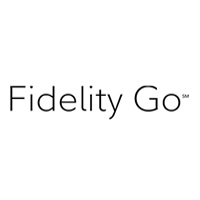Fidelity Investors offer new options to choose between a robo-advisor and a human-cyborg hybrid.
Following Fidelity Investments’ announcement that it would combine its automated Fidelity Go and hybrid Personalized Planning & Advice robo-advisor businesses, tech experts chimed in and said the move made sense.
Furthermore, investors can choose between two different types of robo-advice given by Fidelity Investments: Fidelity Go, a service that only uses digital technology for investment management, and “Cyborg,” or a hybrid product that combines automated investment management with human financial advisors.
Besides, at the conclusion of the first quarter, robo-advisors had approximately $1 trillion in assets under management, an increase of 26% from the corresponding time the previous year.
A Fidelity representative told ThinkAdvisor that the company is always changing its offerings to better serve customers.
The spokesperson continued that with the change, they would extend the benefits of Fidelity Go for younger and emerging investors by eliminating the advisory fee for accounts under $25K. Also, they will offer the coaching and planning of Personalized Planning & Advice to investors with accounts over $25K at a new, lower cost.
The spokesman verified that accounts over $25,000 will be charged 35 basis points yearly.
Currently, Fidelity Go costs $3 per month for holdings under $50,000 and 35 basis points for balances over $50,000. While Planning & Advice levies a 50 basis point fee.
Fidelity is waiving fees for clients with $25,000 to $50,000 for the first six months because they will be charged more under the amalgamated platforms’ new pricing structure, the company’s spokeswoman said.
The industry has years of expertise with this advice-driven technology today, Timothy Welsh, president and founder of the consulting firm Nexus Strategy, told ThinkAdvisor thinks that this approach is realistic.
According to him, stand-alone robot solutions confuse people’s message by having various names, brands, and distribution tactics. But actually, it is really simply a subset of financial advice and customer preferences in how they want to communicate with them.
The more cohesive and straightforward the brand messaging is, the better results people get, according to marketing theory. Unquestionably, it is one of those minimalistic strategic approaches, Welsh admits.



